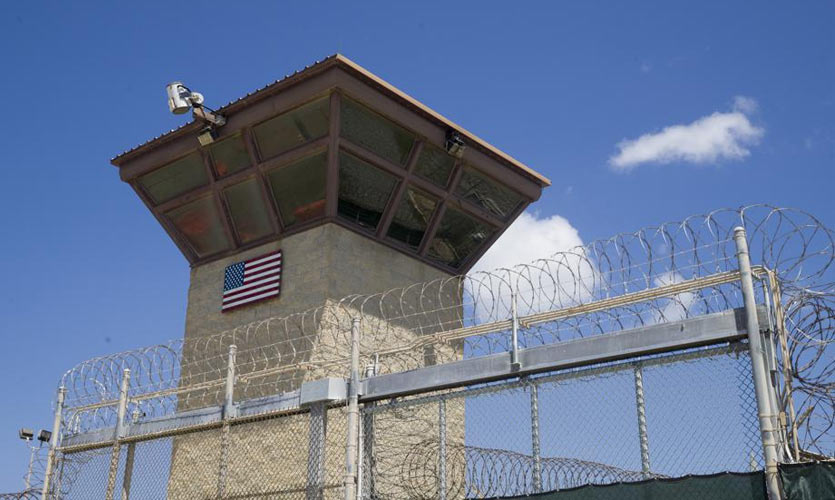In the past few months, the Biden administration has begun laying the groundwork for releasing prisoners from Guantanamo Bay, and moving closer to shutting it down. Several of the 39 men held indefinitely without charge at the United States base in Cuba could now be safely released to their homelands or sent to another country, as decided by a review board that includes military and intelligence officials. According to the Associated Press, the administration, under criticism from human rights groups for not doing more to close Guantanamo, and having released only one prisoner over the past year, has made several decisions about these prisoners recently.
Background
After the 9/11 attacks and the subsequent occupation of Afghanistan by US and NATO forces, the detention centre was opened in January 2002 by President George W Bush. It’s function was to hold and question prisoners suspected of links to al-Qaeda or the Taliban. There have been approximately 780 men who have passed through Guantanamo, which peaked in 2003 at about 680. Donald Rumsfeld, the former defence secretary under Bush, famously described the men held there as “the worst of the worst”, but many were low-level militants. Reportedly, some were not even connected to terrorism, and few could be charged.
Soon after, reports of torture and abuse began to surface. Prior to their arrival at Guantanamo, the CIA was believed to torture detainees in secret prisons, with the military continuing the abuse. Prisoners reportedly suffered sleep deprivation, extended solitary confinement, light and sound manipulation, exposure to extreme temperatures, threats of rape, dogs attacks, physical beatings, and religious abuse. The plans and actions involved in these crimes violated both US and international law, but the officials responsible for these crimes have never been held accountable. The detention centre soon became a lightning rod of criticism from allied countries, and a propaganda boon for the so-called enemy.
532 prisoners had been released by Bush, but the fates of the rest were left for his successor to decide. Upon taking office, President Barack Obama vowed to close Guantanamo. In Congress, however, there was strong opposition to the idea of transferring prisoners to the United States, even to go to federal court. In order to determine if prisoners may be released without posing a threat to national security, the Periodic Review Board was established by the Obama administration. 197 prisoners left Guantanamo during the Obama administration. As part of a plea bargain, a single prisoner was released under President Donald Trump, bringing the total number of prisoners left to 40.
Under Biden
As far as the Guantanamo Bay detention centre is concerned, President Biden has said little. One prisoner has been released under his administration thus far. According to the most recent decisions, there are 20 prisoners eligible for release or transfer, and one is scheduled to complete a sentence shortly after being convicted by the military commission. Several tasks still remain to be accomplished, including, in some cases, finding countries willing to accept prisoners and impose security controls on them. However, some may be able to leave in the coming weeks and months.
Human rights groups lamented a lack of progress on closing Guantanamo in January after marking the 20th anniversary of the prison’s opening. Over the past few years, there have been some behind-the-scenes activities with the board, which has been one of the few ways out of confinement, although it was never popular with detainee advocates. At the time President Biden assumed office, there were five people in custody who had been cleared; four were holdovers from the Obama administration, and one had been cleared under Trump. Biden has cleared 15 people so far, including more than half a dozen in recent weeks.
Read more: Indian Envoy Highlights The UN’s ‘Dangerous’ Tendency On Terrorism
J Todd Breasseale, the Pentagon deputy press secretary, described this process as “deliberate and thorough” in order to responsibly reduce the detainee population and close Guantanamo.
The age and health of the detainees are among the factors they consider, Breasseale said. Among them was Mohammed al-Qahtani, a mentally challenged Saudi national, who authorities said wished to be a 9/11 hijacker but was prevented from entering the country by a suspicious customs official at Orlando International Airport. Legal officials have concluded that al-Qahtani had been tortured at Guantanamo, thereby eliminating the possibility of trying him by military commission. Among those cleared under Biden was Saifullah Paracha, a 74-year-old Pakistani national with many medical problems, and the oldest prisoner at Guantanamo. For the first time, the review board has cleared a “high-value detainee”, who was designated as such because he was held in the secret facilities known as black sites.
The United States, however, is no closer to closing Guantanamo. The military commissions are still investigating 10 cases. These include five people accused of planning and assisting the September 11 attacks. Despite years of pretrial litigation, no trial date has been set for a death penalty case. There could be a plea bargain to end all pending cases, but that leaves open the question of where they would serve out sentences. Prisons like Guantanamo and policies such as indefinite detention without charge epitomise discriminatory law enforcement, Islamophobia, and disregard for human rights around the world, and their existence must be reconsidered.










